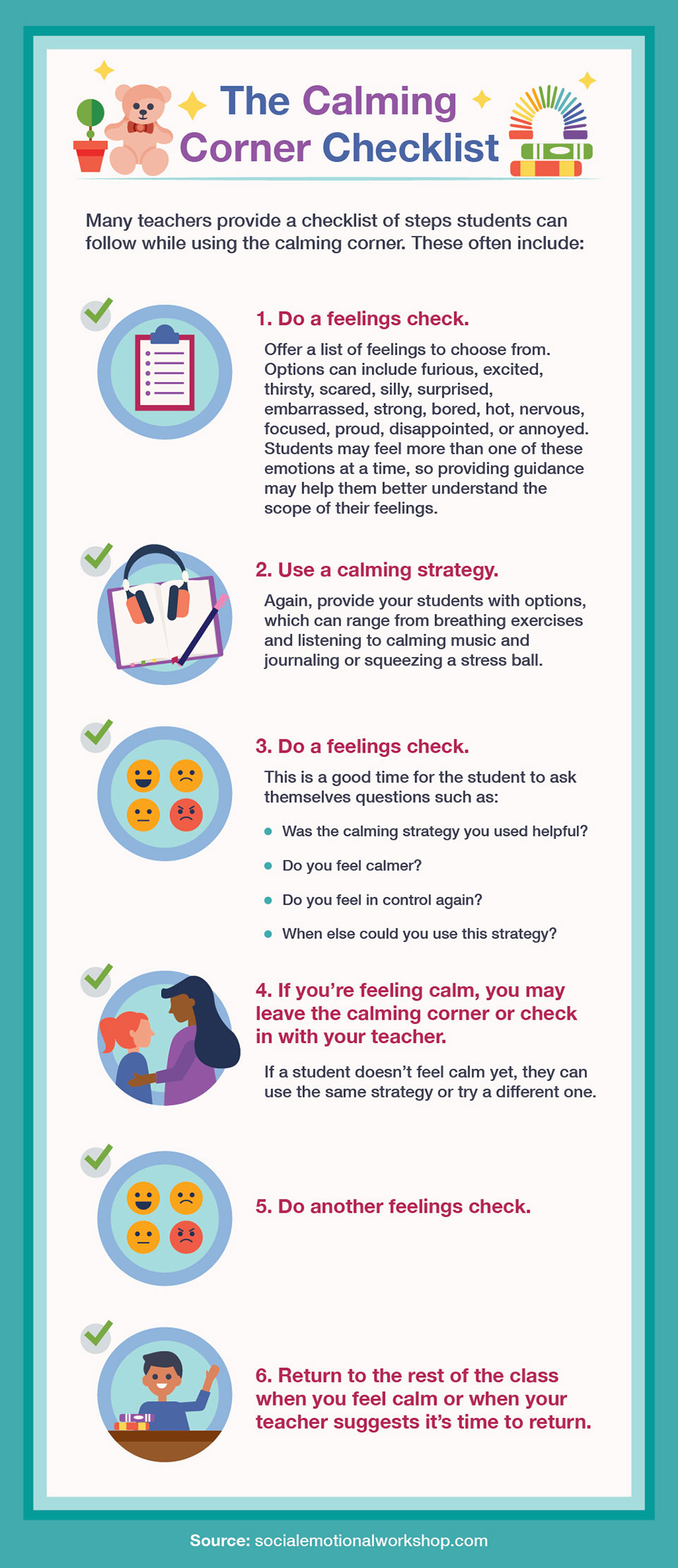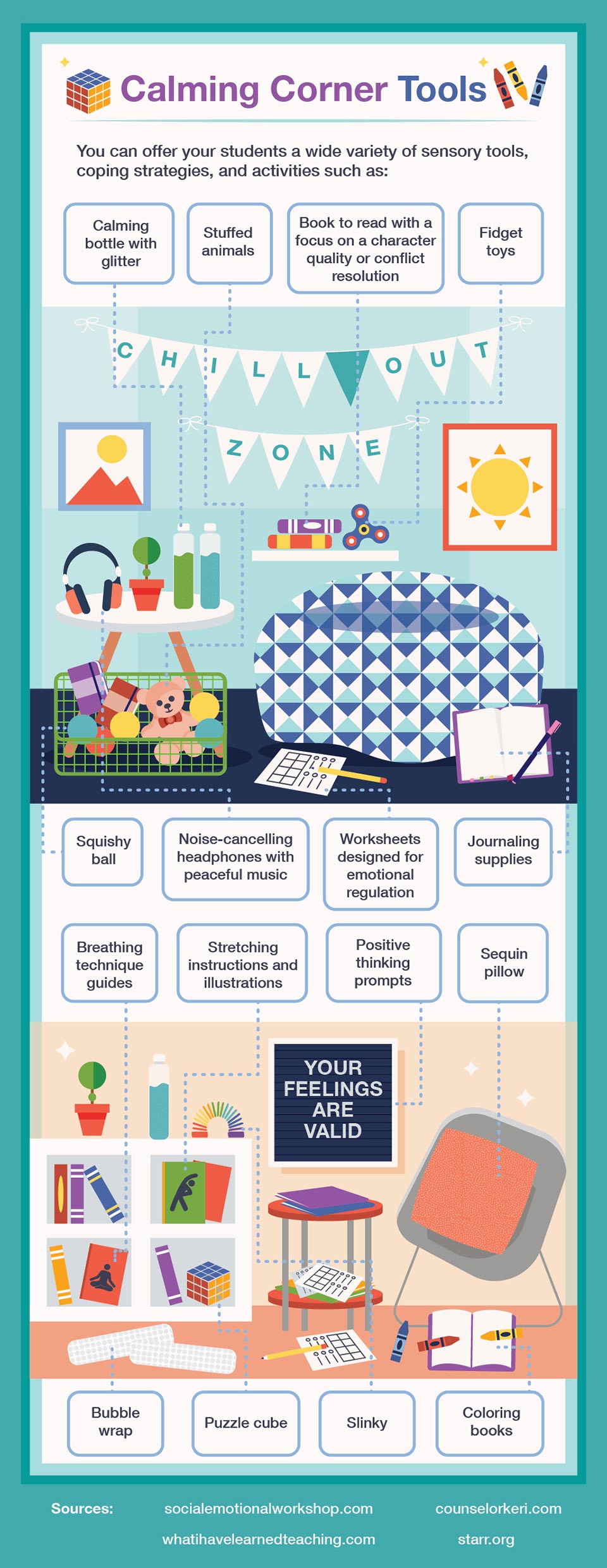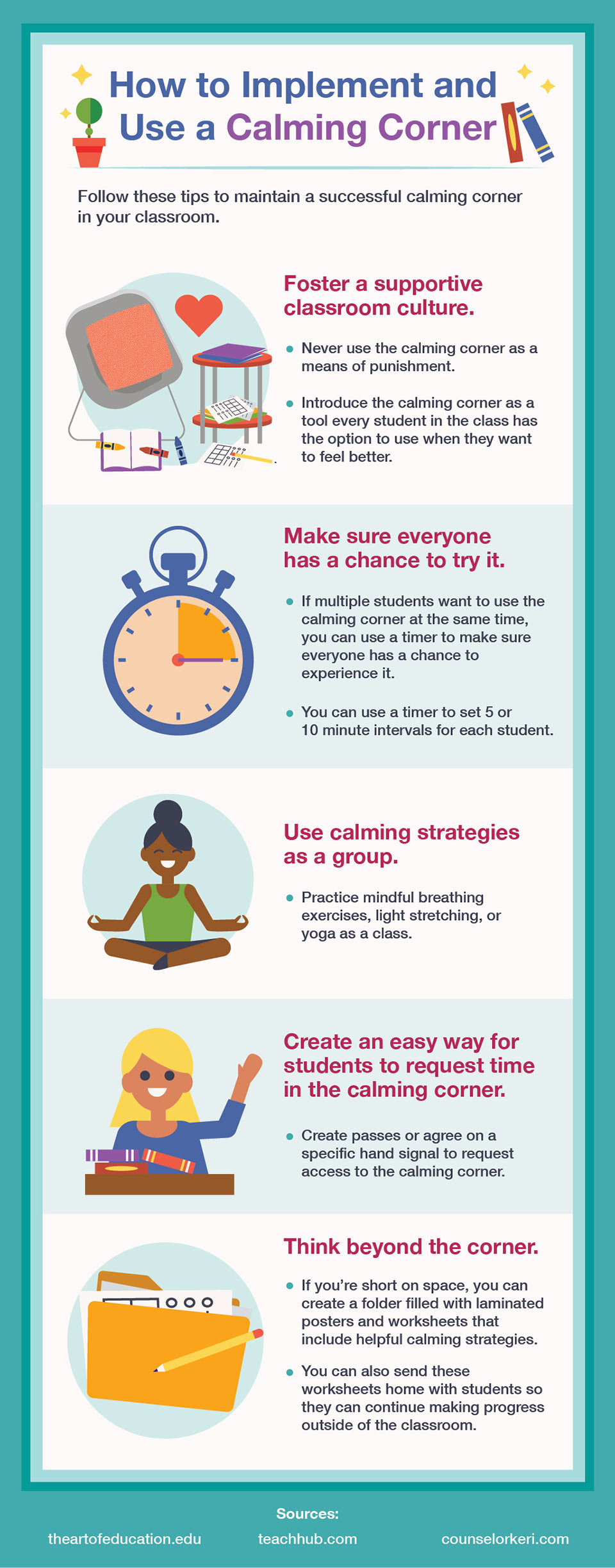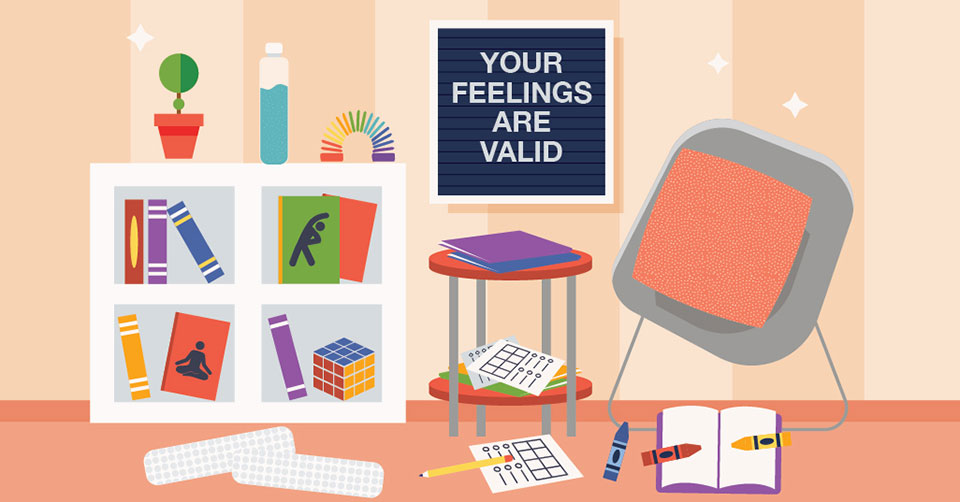The calming corner—also referred to as a mindfulness corner, a calm down corner, or a chill out spot—is a concept employed in a growing number of classrooms across the nation, and for good reason. Calming corners are small, designated spaces within a classroom where children who need a short break from group activities or instructions can work on their self-regulation skills.
While it's important to introduce a calming corner as a tool every child may use, you'll find it especially helpful for students experiencing stress or trauma at home as well as for students feeling overwhelmed at school. In some of these instances, certain students may seem hyperactive or disruptive. In other instances, they may appear sleepy or disengaged. No matter the case, the calming corner provides a safe space for children to regroup, process their feelings, and prepare to rejoin the class.
Keep in mind a calming corner doesn't only benefit the students who use it frequently; it can create a less disruptive classroom environment for other students, too. As a teacher, creating a simple way for struggling students to hone their self-regulation skills is also to your advantage. Even if creating and introducing a calming corner takes a little extra time and effort at the start of the school year, your work will pay off for the entire class before long.

Tips to Create an Effective Calming Corner
In order for a calming corner to work as intended, it must be more than just a quiet area in which students can sit. (That being said, it's a good idea to choose an area in the back of the classroom or a corner where the child making use of the space isn't in direct view of his or her classmates. Prying eyes can make it harder to overcome a difficult emotion.) You can designate the calming corner with bookshelves or other furniture as partitions, or by adding a special mat, desk, bean bag, or tapestry. It's also a good idea to communicate that the calming corner should be used only for its intended purpose. In addition to the space itself, there need to be activities and tools such as breathing exercises and fidget spinners designed to help kids process their emotions and gain control of their feelings.
Tools to Include in a Calming Corner
In addition to a poster outlining the basic steps you'd like students to follow, you may want to provide visuals that show how to practice soothing breathing techniques, offer strategies for dealing with bullies or identifying feelings, and suggest ways to work through those challenging emotions. You can create reusable Velcro emotion and strategy cards to help guide students. (Consider using pictures as well for younger students.)

How to Implement and Use a Calming Corner
Follow these tips to maintain a successful calming corner in your classroom.
Foster a supportive classroom culture
It's crucial that you create a classroom culture that supports the use of a calming corner as needed. The first step: Never, ever use it as a means of punishment. Begin by introducing the calming corner as a tool every student in the class has the option to use when they want to feel better. Invite each child to try it out individually, but make it clear that it's not intended to be a “hang out” spot and shouldn't be used for a full class period.
Make sure everyone has a chance to try it
At first you may find the calming corner quite popular. It's new and exciting, after all! If you run into multiple students wanting to use it at the same time, you can use a timer to make sure everyone has a chance to experience it; five minute sessions should do the trick. The interest among curious students will wane quickly, but students who really benefit from short, calming breaks will continue to use the corner. To help your students progress in the calming corner, offer them a way to keep track of the strategies they've found useful. You can create individual “calm down toolboxes” or journals students can add to throughout the school year as they use the space.
Use calming strategies as a group
When it comes to creating and maintaining the supportive calming classroom culture, be sure to provide opportunities for students to use some of the strategies listed in the calming corner as a group. Practice mindful breathing exercises as a class, explaining that these can also be used individually in the calming corner—or anywhere, for that matter. Gentle stretches or even yoga may benefit your classroom as a whole, and the more you implement these activities as a group, the more comfortable student will feel using these strategies on their own. Besides, even though some children need more assistance regulating their emotions, all students will benefit from learning and using these anxiety-reducing and focus-enhancing techniques.
Create an easy way for students to request time in the calming corner
You'll want to make it easy for students to request access to the calming corner without disrupting the class. You can create physical passes for them to use, or a subtle hand signal may do the trick.
Think beyond the corner
Short on space? Consider creating a folder filled with laminated posters and worksheets. It will take up very little room—and won't require a dedicated corner—but can provide your students with a host of helpful strategies and tools. Plus, if you're likely to need to move to a different room for any reason, you can easily take what you need and have a new calming corner set up in no time. If certain students find your calming corner particularly helpful, consider offering printables of your posters and worksheets to parents so progress can continue at home.

Conclusion
There are as many ways to create calming corners as there are reasons for children to use them. When creating your own safe space for your students, consider the needs of your class, brainstorm strategies and tools that will best fit your personal approach, and then have some fun putting it all together!
Share this infographic on your site
Kristen Seymour
Kristen Seymour brought her passion for both pets and writing to the online space nearly a decade ago, working as an editor at AOL's Paw Nation and then Vetstreet.com. She's also a regular contributor to HealthyPet Magazine. Additionally, Seymour covers fitness, food and healthy (and yes, sometimes pets!) on her Fit Bottomed Girls website and podcast. Based in sunny Sarasota, Florida, Seymour shares her office with her husband and a small menagerie of rescue pets: a snuggly senior Lab mix, a mouthy hound mix and a cat who loves to be petted exactly seven times—but never eight.


